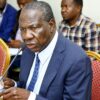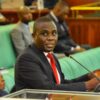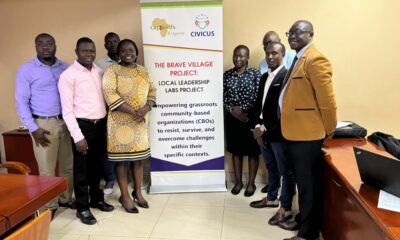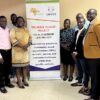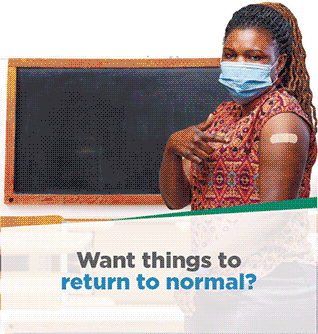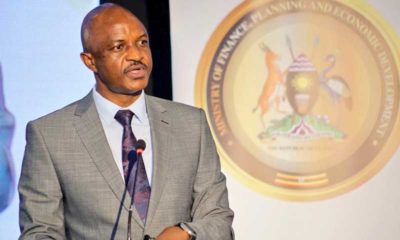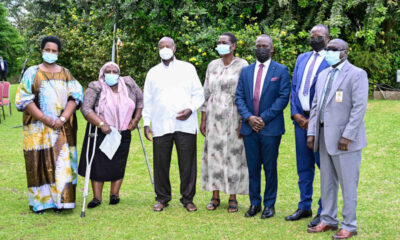News
Loan scheme imbalances trigger debate
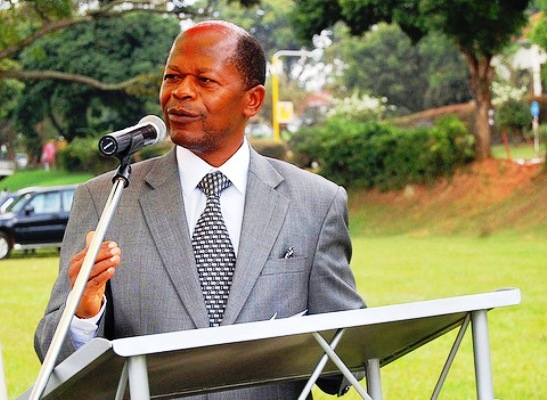
Dr. Muyingo released the list of beneficiaries
The Minister of State for Higher Education Dr. Chrysestom Muyingo this week released the list of 1,830 beneficiaries for the 2019/2020 Government Loan Scheme for students for universities and other certified institutions of higher learning.
The list indicates however that there is a regional imbalance in the number of student beneficiaries for the scheme, indicating that the central and eastern parts of the country dominate the list of beneficiaries.
Testimonies from officials of the Higher Education Students Financing Board (HESFB) reveals that Northern Uganda and Karamoja regions had fewer applications and eventually got fewer successful beneficiaries this year. They attributed the matter to low levels of knowledge and awareness among the parents and leaders of the two regions.
They also cited the low levels of admission into universities and other institutions of high learning, which acted as a hindrance when it comes to evaluating applicants for the HESFB.
Currently, the HESFB uses its discretion in awarding loans among other criteria. However, sources say that students from needy districts are out-competed by their counterparts from the central region who do well in sciences and many of whom would have secured admission into universities.
This year for example, according to Allison Nankunda, the HEFSB Loan’s officer some districts such as Amudat and Nabiratuk didn’t have a single applicant. Many others mostly from northern Uganda and Eastern Uganda also recorded very few applications.
Kotido, Napak, Kaabong also had very few applications. In order to counter the apparent imbalances among the beneficiaries, HESFB officials have been conducting countrywide tours and workshops to raise awareness among leaders.
According to Bob Nuwagira, the Spokesperson of the HESFB, some of the leaders from Northern Uganda, one of the least beneficiary regions, called for the introduction of a quota system to reduce on the imbalances. They also asked the HESFB to include students admitted on certificate courses as well as continuing students to be included among those eligible to benefit.
Christopher Chekurui, the district chairperson of Kapchorwa district called for greater consideration of rural areas by the scheme as a way to close the skills gap in their region. Chekurui for example cited the fact that his district desperately needs science teachers.
Some experts have however blamed the deteriorating standards of education in most rural areas as the root causes of the low levels of university admission and consequently low levels of applications for HESFB.
Fagil Mandy, a renowned parenting author and former Chief Inspector of Schools and Chairperson of the Exams body UNEB, blamed the collapse of the inspection function and general poor management of schools as the reason for poor standards of education in upcountry schools.
“Before they complain of low numbers of science teachers in schools, are they performing well in arts subjects? We need clear supervision of teachers and other school activities” argued Mandy.
He added: “Instead of waiting to see how many students have passed, been given scholarships, we should be looking on how schools are being managed, how teachers are teaching and learning. We launched the minimum teaching standards in 1997, but are we following them?”
The HESFB started in 2014 by sponsoring 1201 students in twelve Universities. The number of beneficiaries has since expanded to 10,024 beneficiaries as of September 2019.
Beneficiaries
This year alone, 1830 students out of a total of 7,310 applicants received loans from the scheme. Majority of the beneficiaries are students who were admitted on science courses.
Ignorance about HESFB still rampant
Julius Mudoma, a first year student of Business with Education at Kyambogo University nearly missed out on achieving his dream of joining University Education due to lack of tuition.
Mudoma scored 13 points in his Uganda Advanced Certificate of Education (UACE) in the combination of History, Economics and Geography/ICT (HEG/ICT) at Bugisu high school in Mbale district and was successfully admitted at Kyambogo University.
In a desperate search for funds, Mudoma’s parents sold part of the family land to raise funds to pay for this education.
“My parents had to sell part of their land in Bunanseke village, Bumasifa Sub County in Sironko district to raise UGX1.6m that I needed before I could join campus,” Mudoma recalls.
Mudoma believes that his parents could have saved their valuable asset if he knew about the loan facility. This is because he only got to know about the scheme two weeks ago after the deadline for applications had passed this year.
“My friend is the one who told me that she saw an advert in newspapers and she applied.” Mudoma blamed his ignorance on low levels of awareness created by the government to ensure that everyone is informed of the opportunity.
“In the village, the most accessible medium is radio I have never heard anything about it on our local radio stations. We cannot afford to buy [news] papers everyday, [to know about the call for applications]” he said.
Mudoma may not be alone in lamenting the low levels of awareness that have turned into missed opportunities.
It turns out that Mudoma was lucky not to bank on the scheme because it gives loans only to applicants admitted for Science, Technology, Engineering and Mathematics (STEM) programs, as well as persons with disabilities.
He added that as HEFSB, carried out countrywide awareness campaigns through workshops and engaging in online platforms.
While presenting the Loan application process, eligibility, loan coverage and scorecard used in choosing beneficiaries Moroto district recently,
Are loan beneficiaries paying back?
In his article titled Steady progress in the loan repayment & recovery process, Timothy Makhoha the HEFSB Recoveries Manager 1700 students who had completed their studies by 2018/19 academic year had started repaying back their loans. According to Timothy, a total of UGX 55M had been collected so far.
According to Callisto, only 180,000 students attain higher education out of the 1.3 million secondary graduates, yet there are more than enough higher institutions with 9 public universities and 41 private universities with over 171 other tertiary institutions
While launching the 2019/20 official list of the loan beneficiaries at the Uganda Media Centre , Chrysestom Muyingo the State Minister of higher Education said that the government is committed to sponsor more students who are deprived of higher education due to lack of fees. “We have spent over UGX 60bn on this scheme and as government we are determined to see that the illiteracy level is reduced in the country” he said.
Comments




